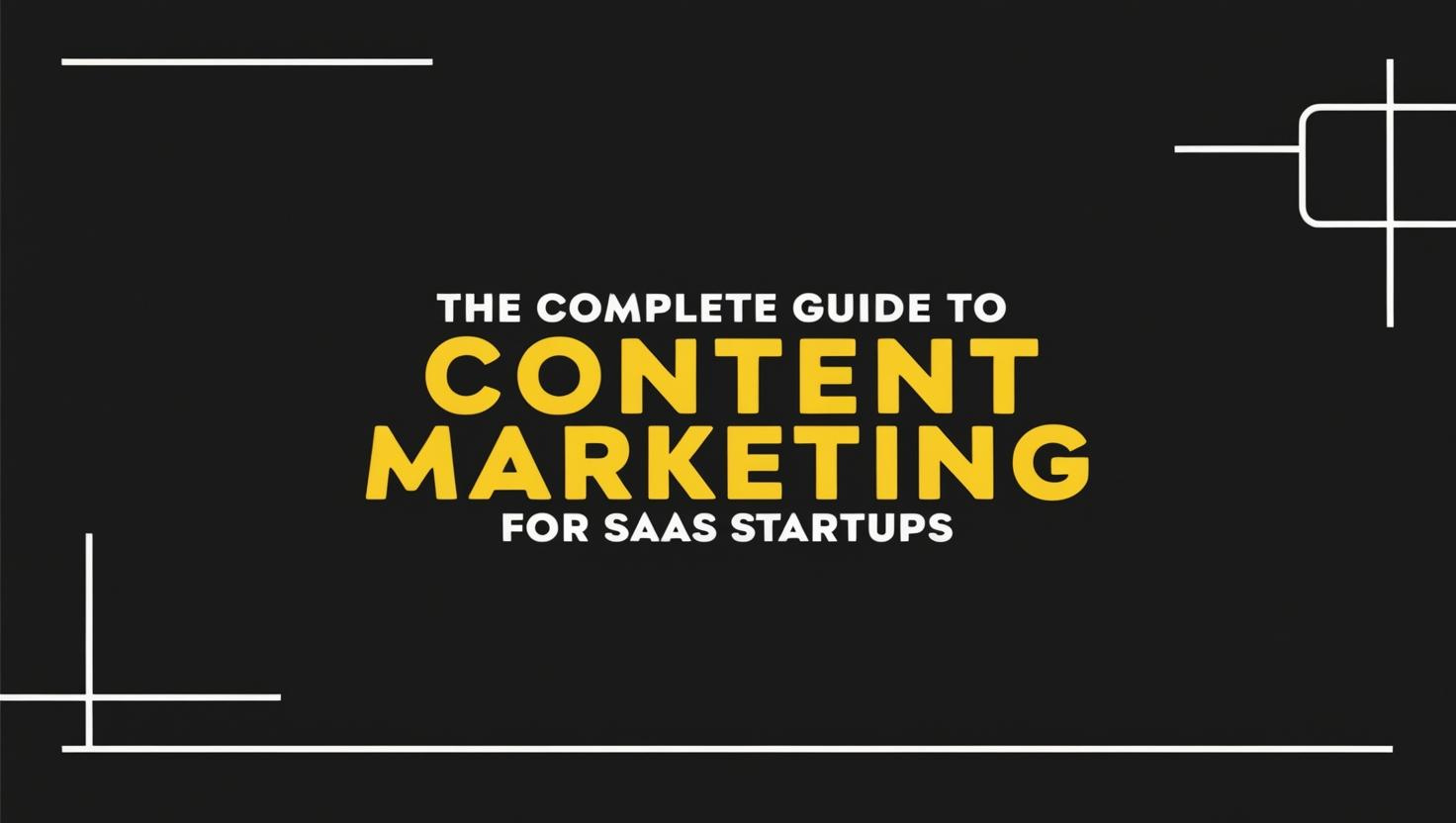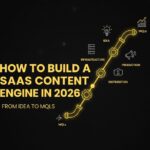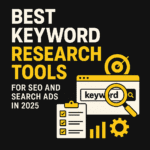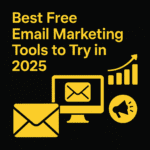Content marketing has emerged as a critical strategy for startups looking to establish brand authority, generate qualified leads, and drive sustainable growth. Unlike traditional marketing approaches, content marketing for SaaS requires a specialized understanding of complex buyer journeys, technical audiences, and subscription-based business models.
According to the Content Marketing Institute’s 2024 B2B Content Marketing Report, 72% of the most successful B2B companies rate their content marketing strategy as extremely or very effective, compared to just 25% of the least successful companies. This stark contrast underscores the importance of developing a strategic approach to content marketing that aligns with your specific SaaS offering and target audience.
This comprehensive guide will walk you through everything you need to know to build, implement, and optimize a content marketing strategy that drives measurable results for your SaaS startup.
Understanding the SaaS Content Marketing Landscape
SaaS content marketing differs significantly from traditional B2B or B2C content marketing in several key ways.
Why Content Marketing Works for SaaS
Content marketing is particularly effective for SaaS companies because:
- Long sales cycles: Enterprise SaaS purchases often involve multiple stakeholders and lengthy decision-making processes.
- Education-driven purchases: SaaS products frequently require buyers to understand new concepts or technologies.
- Customer lifetime value (CLV): Subscription models mean that acquiring customers through content can yield high ROI over time.
- Competitive differentiation: In crowded markets, thought leadership content can distinguish your solution.
According to ProfitWell research, SaaS companies that invest heavily in content marketing experience 30% higher growth rates and 5-10% better retention rates. This translates to significant revenue impact, with content marketing leaders reporting 7.8x higher year-over-year growth than content marketing laggards.
“Content isn’t just another marketing tactic for SaaS companies—it’s the foundation of the entire customer journey from awareness to advocacy. The most successful SaaS businesses are those that view content as a product itself, investing in its quality and measuring its impact rigorously.”
— Sarah Ware, CEO of Markerly
Also read: Top SaaS Content Marketing Mistakes That Kill Growth
Key Content Marketing Metrics for SaaS
| Metric | Description | Benchmark (Industry Average) |
|---|---|---|
| CAC (Customer Acquisition Cost) | Total marketing expenses ÷ number of new customers | $205-$500 for SMB SaaS, $8,000-$12,000 for enterprise SaaS |
| LTV:CAC Ratio | Customer lifetime value ÷ customer acquisition cost | 3:1 or higher indicates good efficiency |
| MQL to SQL Conversion | % of marketing qualified leads that become sales qualified | 13% average across B2B SaaS |
| Content Engagement Rate | Average time on page, scroll depth, or interaction rate | 2-4 minutes for blog content |
| Organic Traffic Growth | Year-over-year growth in non-paid search traffic | 20-30% YoY for established content programs |
| Free Trial Conversion Rate | % of free trial users who become paying customers | 14-25% depending on product complexity |
Source: OpenView Partners’ 2024 SaaS Benchmarks Report
Building Your Content Strategy
A successful SaaS content marketing strategy aligns business objectives with audience needs and content execution.
Audience Research and Buyer Personas
Begin by developing detailed buyer personas based on:
- Job roles and responsibilities of decision-makers and influencers
- Pain points and challenges your solution addresses
- Information sources and communities your audience trusts
- Buying committee dynamics for different company sizes
HubSpot’s research indicates that using personas makes websites 2-5 times more effective and easier to use by targeted users. For SaaS companies specifically, Gartner reports that purchase decisions involve an average of 6-10 decision-makers, each requiring different content types.
“The biggest mistake I see SaaS companies make is creating content for a generic ‘user’ rather than addressing the specific concerns of each stakeholder in the buying process. Technical evaluators, end users, and financial decision-makers all need different questions answered before they can advocate for your solution.”
— Rand Fishkin, Co-founder of SparkToro and Moz
Content Audit and Gap Analysis
Before creating new content, assess your existing assets:
- Inventory all content across your website, blog, help center, and social channels
- Evaluate performance using traffic, engagement, and conversion metrics
- Map content to buyer journey stages and personas
- Identify gaps in coverage by stage, persona, or topic
According to Semrush’s State of Content Marketing report, 64% of successful content marketers conduct regular content audits, compared to only 37% of less successful teams.
Competitive Content Analysis
Analyze how competitors are approaching content:
| Competitor | Content Types | Publishing Frequency | Key Topics | Distribution Channels | Strengths |
|---|---|---|---|---|---|
| Competitor A | Blog posts, webinars, case studies | 3x weekly | Integration, automation, analytics | Email, LinkedIn, YouTube | Technical depth, visual quality |
| Competitor B | Podcasts, templates, infographics | 2x weekly | Security, compliance, onboarding | Twitter, industry forums | Community engagement |
| Competitor C | White papers, video tutorials, knowledge base | 1x weekly + product updates | API, customization, industry solutions | Direct email, partner channels | Comprehensive documentation |
This analysis reveals opportunities for differentiation and audience capture.
Content Creation for Different Funnel Stages
Effective SaaS content marketing addresses prospects at every stage of the buying journey.
Top-of-Funnel (Awareness Stage)
Goals: Build brand visibility, establish category recognition, attract relevant traffic
Content types:
- Blog posts addressing pain points
- Industry thought leadership
- Educational webinars
- SEO-optimized guides and resources
- Social media content
Key metrics: Traffic, brand awareness, newsletter signups
According to the 2024 Edelman-LinkedIn B2B Thought Leadership Impact Study, 48% of decision-makers spend more than one hour per week consuming thought leadership content, and 65% said it has increased their respect for an organization.
Middle-of-Funnel (Consideration Stage)
Goals: Establish authority, demonstrate expertise, nurture leads
Content types:
- Product comparison guides
- Case studies and success stories
- Detailed solution guides
- Email nurture sequences
- Product webinars
Key metrics: Email engagement, content downloads, demo requests
Research from Demand Gen Report shows that 78% of B2B buyers use case studies when researching purchases, making them the most influential content type for middle-funnel evaluation.
“The mistake many SaaS startups make is rushing to promote their features before establishing why those features matter. Your middle-funnel content should connect your unique capabilities to specific outcomes your prospects care about, using real customer examples whenever possible.”
— April Dunford, Positioning Expert and Author of “Obviously Awesome”
Bottom-of-Funnel (Decision Stage)
Goals: Overcome objections, facilitate evaluation, support purchase decisions
Content types:
- Free trials with guided onboarding
- Implementation guides
- ROI calculators
- Security and compliance documentation
- Competitor comparison sheets
Key metrics: Trial signups, product qualified leads (PQLs), conversion rates
According to Totango’s 2023 SaaS Metrics Report, companies offering interactive bottom-funnel content like assessment tools and calculators see 40% higher conversion rates than those using static content alone.
Also read: SaaS Content Funnel: How to Map BOFU to Demos
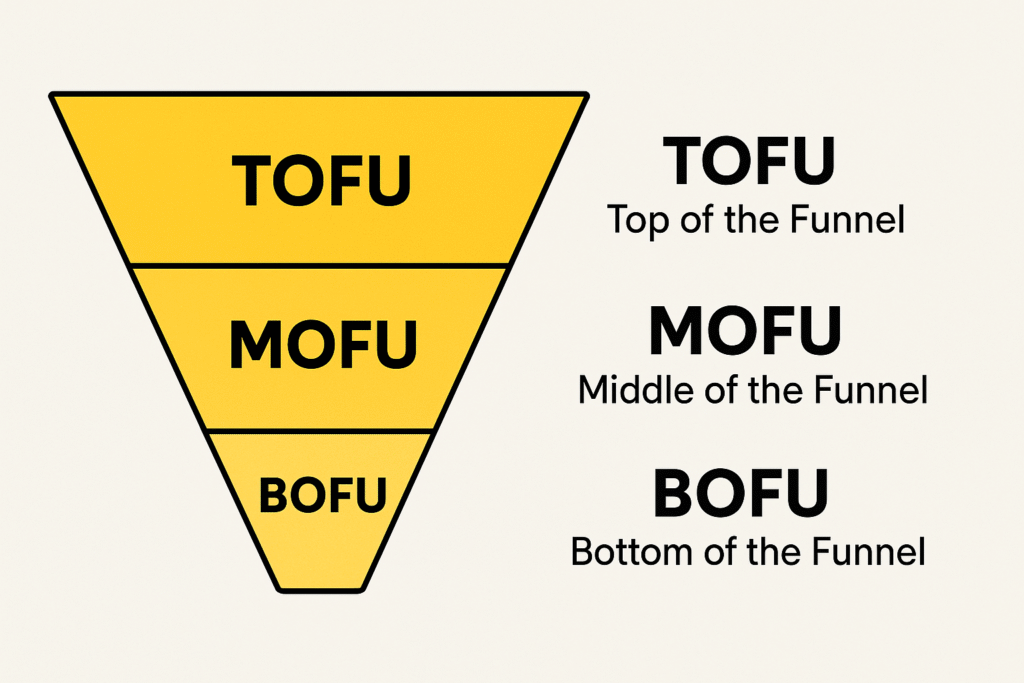
| Funnel Stage | Content Type | Format | Distribution Channel | Measurement |
|---|---|---|---|---|
| Top of Funnel | “10 Challenges of Customer Data Management” | Blog post | Organic search, social | Traffic, time on page |
| Middle of Funnel | “Building vs. Buying a Customer Data Platform” | Comparison guide | Email nurture, retargeting | Downloads, follow-up actions |
| Bottom of Funnel | “ROI Calculator: Measuring the Impact of Our Platform” | Interactive tool | Direct outreach, demo follow-up | Completed calculations, sales meetings |
Distribution Channels for SaaS Content
Creating great content is only half the battle—strategic distribution is equally important.
Organic Search and SEO
For SaaS companies, search remains the most sustainable long-term channel. According to BrightEdge research, SEO drives 53% of website traffic across industries, with an even higher percentage for B2B SaaS.
Key strategies:
- Conduct comprehensive keyword research focused on both product and pain point terms
- Optimize for featured snippets and SERP features
- Create linkable assets like original research, tools, and comprehensive guides
- Build topical authority through clustered content strategies
Email Marketing
Email continues to be a high-ROI channel for SaaS content distribution:
- Segment lists based on funnel stage, persona, and behavior
- Create automated nurture sequences triggered by specific actions
- Use progressive profiling to gather more information over time
- Employ engagement-based lead scoring
Campaign Monitor data shows that segmented email campaigns drive a 760% increase in revenue compared to one-size-fits-all campaigns.
Social Media and Community Building
B2B SaaS companies find varying success across social platforms:
- LinkedIn: 80% of B2B social media leads come from LinkedIn (Foundation Inc.)
- Twitter: Effective for customer service and industry conversations
- Reddit and specialized forums: Valuable for developer-focused SaaS
- Private communities: Increasingly important for nurturing prospects and customers
“The most successful SaaS content strategies I’ve seen prioritize building owned communities alongside their content. These communities transform one-way broadcasting into multi-directional conversations that drive both acquisition and retention.”
— Dave Gerhardt, Founder of Exit Five and former CMO at Drift
Content Partnerships and Syndication
Amplify reach through strategic partnerships:
- Guest posting on industry publications
- Co-created content with complementary vendors
- Sponsored content in industry newsletters
- Podcast appearances and interviews
According to the Content Marketing Institute, 69% of the most successful B2B marketers use content syndication, compared to only 45% of the least successful.
Measuring Content Marketing Success
Content marketing measurement should connect activity to business outcomes.
Content Attribution Models
| Attribution Model | Best For | Advantages | Limitations |
|---|---|---|---|
| First Touch | Awareness campaigns | Recognizes content that initiates relationships | Undervalues nurturing content |
| Last Touch | Bottom-funnel evaluation | Simple to implement | Ignores earlier touchpoints |
| Linear | Complex sales cycles | Gives credit across the journey | Doesn’t prioritize critical touchpoints |
| Position Based | Balanced approach | Emphasizes first and last interactions | Requires more complex setup |
| Time Decay | Short sales cycles | Rewards recency | May undervalue early education |
| Data-Driven | Mature programs | Most accurate | Requires significant historical data |
According to research by Google and Forrester, companies using advanced attribution models achieve 30% better ROI from their marketing investments compared to those using single-touch models.
KPIs by Content Type
Different content assets serve different purposes and should be measured accordingly:
- Blog posts: Traffic, engagement metrics, lead magnet downloads
- Gated content: Conversion rate, lead quality, pipeline influence
- Case studies: Views, sales usage, close rate influence
- Webinars: Registration rate, attendance rate, question engagement
- Product content: Feature adoption, onboarding completion, time-to-value
“Too many SaaS companies measure content success through vanity metrics like page views rather than business impact. The most important question is not how many people read your content, but whether the right people are taking meaningful actions afterward.”
— Andy Crestodina, Co-founder and CMO of Orbit Media Studios
Scaling Your Content Operations
As your SaaS company grows, systematic content operations become essential.
Content Production Workflows
Establish streamlined processes for:
- Content ideation and prioritization
- Brief development and approval
- Creation and subject matter expert review
- Editorial review and quality assurance
- Publication and promotion
- Performance analysis and optimization
According to Kapost research, companies with documented content workflows are 36% more effective at content marketing overall.
Content Technology Stack
| Function | Tool Categories | Popular Solutions for SaaS | Integration Considerations |
|---|---|---|---|
| Planning & Management | Editorial calendars, project management | Airtable, Asana, Trello, CoSchedule | Must integrate with marketing automation |
| Creation & Collaboration | Document editors, design tools | Google Workspace, Canva, Figma | Version control and feedback processes |
| SEO & Research | Keyword research, competitive analysis | Ahrefs, Semrush, Clearscope | Content brief workflow integration |
| Distribution & Promotion | Email, social media, advertising | HubSpot, Klaviyo, Buffer | Customer data platform connections |
| Analytics & Optimization | Performance tracking, testing | Google Analytics, Hotjar, Optimizely | Attribution model alignment |
| Content Personalization | Dynamic content, recommendations | Mutiny, RightMessage, Intellimize | Product usage data integration |
Content Team Structure
As you scale, your team will likely evolve through these stages
- Founding stage: Founder-led content with freelance support
- Growth stage: Dedicated content manager with agency/freelancer network
- Scaling stage: Specialized roles (content strategist, SEO specialist, editors)
- Enterprise stage: Full content team with channel specialists and operations support
According to a ProfitWell analysis, the average Series A SaaS company allocates 30-35% of its marketing budget to content creation and distribution.
Case Studies and Success Stories
Intercom: Product-Led Content Marketing
Intercom built its growth engine around its blog, Inside Intercom, which focused on product management, design, and customer experience topics rather than just their product features.
Results:
- 4 million annual organic visitors
- 25% of all new customers influenced by content
- Established category leadership in customer messaging
Key strategy: Leveraging internal experts (product managers, designers, engineers) as content creators, focusing on educational value rather than promotion.
Ahrefs: SEO-Driven Education
Ahrefs transformed from an SEO tool provider into a leading educational resource by investing heavily in tutorial content that showcases their product in context.
Results:
- 1.5M+ monthly organic traffic
- 65% of trial signups influenced by content
- Reduced CAC by 30% compared to paid acquisition
Key strategy: Creating comprehensive, actionable tutorials that naturally demonstrate their product’s value while solving real problems.
“The most effective SaaS content doesn’t sell your product directly—it sells the destination your product helps customers reach. At Ahrefs, we don’t just teach SEO; we show how our tools make implementing those strategies dramatically easier.”
— Tim Soulo, CMO at Ahrefs
Advanced Content Marketing Tactics
Interactive Content and Tools
SaaS companies can leverage their technical capabilities to create interactive content:
- Free tools that solve smaller versions of the problems your product addresses
- Assessments and benchmarking calculators
- Interactive decision trees and solution finders
- Data visualizations and customizable templates
According to Demand Metric, interactive content generates 2x more conversions than passive content, making it particularly valuable for SaaS companies looking to demonstrate value before a purchase.
Product-Led Content
Blur the lines between product experience and content:
- Free product modules that deliver immediate value
- Interactive product tours embedded in educational content
- Documentation that doubles as marketing material
- User-generated content showcasing real implementation
OpenView Partners reports that product-led SaaS companies have 2x higher valuations and 9% better net dollar retention than sales-led organizations.
AI-Enhanced Content Strategy
Leverage artificial intelligence to scale content operations:
- AI-powered content research and topic identification
- Predictive analytics for content performance
- Personalized content recommendations based on user behavior
- Automated content updates and optimization
According to Salesforce research, 84% of marketers now use AI for at least some content tasks, with the highest ROI coming from personalization and content analytics applications.
Conclusion and Action Plan
Content marketing for SaaS startups requires a strategic, data-driven approach tailored to your specific product, audience, and business goals. The most successful SaaS content marketers share these characteristics:
- They understand the unique aspects of marketing subscription software
- They create content strategically aligned with buyer journeys
- They measure content impact on business outcomes, not just engagement
- They build systematic processes for content production and optimization
- They continuously adapt their approach based on performance data
30-60-90 Day Implementation Plan
| Timeframe | Key Activities | Resources Needed | Expected Outcomes |
|---|---|---|---|
| First 30 Days | – Complete audience research – Conduct content audit – Define initial KPIs – Create editorial calendar | – Audience interviews – Analytics access – Content inventory tool | – Documented strategy – Content gaps identified – Measurement framework |
| Days 31-60 | – Produce cornerstone content – Set up distribution workflows – Implement tracking systems – Begin regular publishing | – Content creators – Distribution tools – Analytics configuration | – Initial content library – Baseline performance data – Repeatable processes |
| Days 61-90 | – Analyze initial performance – Refine targeting and topics – Scale successful formats – Begin testing optimizations | – Performance data – A/B testing tools – Content optimization tools | – Content ROI indicators – Optimization opportunities – Scaling plan |
Content marketing for SaaS is not a short-term tactic but a long-term investment that compounds in value over time. As your content library grows, your distribution channels mature, and your measurement becomes more sophisticated, you’ll build a sustainable competitive advantage that drives both acquisition and retention.
By following the frameworks, best practices, and examples outlined in this guide, your SaaS startup can develop a content marketing program that not only generates leads but builds lasting relationships with customers and establishes your position as an industry leader.

